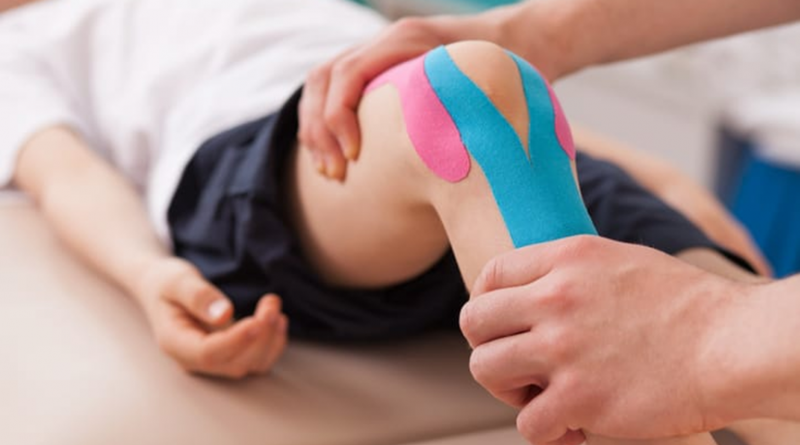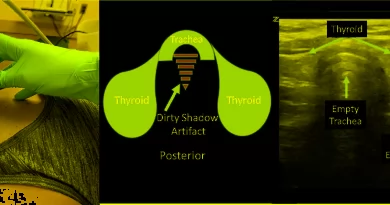Stop Your Knee from Buckling – Tape It!
It can be a sign that you are falling in love when your knees buckle or seem to turn into jelly. However, if it only happens when you are jumping, squatting, or climbing down the stairs, what you are falling for is likely the trick of a patellar tracking disorder.
Patellar Tracking Disorder
Also known as patellar maltracking, patellar tracking disorder is a condition in which the kneecap-patella moves out of its original position when you bend or straighten the knee. This is why its symptoms are commonly observed during activities like squatting, jumping, and kneeling. If you have this condition, you can easily feel your affected knee going crunch when performing any of these activities. Another common symptom is the feeling that your knee is buckling beneath you.
Common Causes
So, what causes this disorder? Is it genetic, or is it something that comes with the environment?
Many things can cause patellar tracking disorder. The cause for individual cases may be hard to identify unless the kneecap has shifted far out from its original position. However, here are some possible causes of the disorder:
- Accidents that cause a heavy impact on the knee, making the patellar shift sideways – towards the inside of the leg or outside, which is more common.
- Unnatural twisting of the knee that puts a strain on the kneecap.
- Ligaments, muscles, or tendons that are too tight. This can lead to manhandling of the patellar.
- Weak thigh muscles.
- Misalignment of the knee joint due to frequent and extreme movement.
- Conditions like flat foot, high-arch foot, knock-knees/valgus, and high-Q angle.
Some factors increase your chances of getting a patellar tracking disorder. These include your weight, sporting activities, previous medical condition, and age. Going further into this, overweight people are more prone to having this condition because more weight means resting on the knee joint than it can handle. In this case, the patellar may give way to cope with the pressure.
Sporting activities that involve a lot of knee flexion (bending) and extension (straightening) can also put you in a position where it becomes easy to get this condition. Incessant flexion and extension may lead to a weakening of the muscles that are holding the patellar. This will cause, ultimately, a misalignment.
Older people who already have arthritis are also more likely to have this condition. Usually, with this condition, the knee cap moves outwards (laterally), but on some occasions, it can move to the inside of the leg (medially).
Treatment Options
You now know that patellar syndrome makes you uncomfortable, but did you know that it also causes a lot of pain? With proper treatment, it may be gone in some months, weeks even. If left untreated, the condition worsens with time, and the pain may become unbearable when you move your knee. There are ways to manage patellar tracking disorder. Below is a list of some common treatments for this syndrome:
- Professional physical therapy: For this, you will, of course, have to see a physical therapist. Even before concluding that you have patellar maltracking, it is important that you see a professional. Patellar tracking syndrome causes a lot of symptoms that are similar to those of other knee conditions. This may lead to a misunderstanding without a proper diagnosis. A physical therapist will guide you through an exercise routine that can help you improve your condition. Sometimes, they can throw a taping technique into the mix.
- Bracing: Knee braces can be easily purchased online or in stores. They help hold the patellar in place. Even before using knee braces, ensure you see a professional.
- Surgery: Surgery is usually the last resort if the condition is extreme. If not, it is best to first try out other forms of treatment before opting for such an invasive procedure. Complete recovery from surgery, even an arthroscopic one that only requires a small incision, may take up to six months or more.
- Taping
You will find, listed above, taping as a part of the treatments for patellar maltracking. Usually, it is used in conjunction with other forms of treatment; nevertheless, it is the treatment form we will be focusing on today.
Kinesio Taping for Patellar Tracking
Kinesiology tape, originally developed in 1979 by Dr. Kenzo Kase, is now all the rage, and for a good reason. The tape can be used for several purposes, including but not limited to orthopedic and neurological functions.
To improve the condition of someone with patellar maltracking, Kinesio tape functions by reducing pain and inflammation, thereby strapping the patellar in place. The question remains – how does it achieve this?
When Kinesio tape was first developed decades earlier, it was done to relieve musculoskeletal pain through its texture and other inbuilt properties. Companies like Hampton Adams have made improvements to the formula, but the basic concept remains the same today.
Kinesiology Athletic Tape was designed to feel like a second skin. This helps to ensure that it is as close to the skin as possible. While doing this, it lifts the skin by a small distance, probably less than a half inch. This space allows the movement of lymph and other fluids beneath the skin to be hitch-free.
Kinesio tape causes decompression that helps reduce pain. It also reduces the irritation and pain that may be caused by the skin on your knee rubbing on the patellar and other underlying bones and tissues. In addition, by increasing your sense of proprioception, it reminds you to be careful with your movement.
Features of Our Kinesio Tape
Kinesio tape is just sticky tape with adhesive backing, but with some companies, it can be much more.
Our Hampton Adams 16ft kinesiology tape is very flexible.
The glory of kinesiology tape lies in its flexibility; this fact did not go over our heads at Hampton Adams. This flexibility allows it to fit not just the knee but other irregular body parts. Moreover, it helps to create a comfortable feeling and does not in any way restrict your movement.
It is made out of hypoallergenic and medical-grade materials.
Apart from the fact that our tape is made out of 100% cotton substrate, every other material it contains is medical-grade and hypoallergenic. This frees you of worries regarding contamination, irritations, and reactions. You will not react or get infections and rashes because of our kinesiology tape.
Furthermore, the tape does not contain latex in any form. The presence of latex in tapes is one of the reasons for reactions, and this has made a lot of people wary of Kinesio tape. With us, you are allowed absolute peace of mind.
Comfortability is a priority.
Hampton Adams kinesiology tape is soft, comfortable, and feels like a second skin. It allows you to feel relaxed rather than stiff and restricted. Movement is easy and less painful with our tape. The texture increases your sense of proprioception and helps to keep your movement in check but does not restrict your range of motion. We can also guarantee that our tape is not itchy.
No sticky residue.
Among the list of fears regarding k-tape is the fear of having sticky goo left behind on your skin. The adhesive on our kinesiology tape is made with a special formula that not only helps to keep the tape on but also ensures that it does not leave behind a sticky residue. Also, the adhesive on our tape is gentle on the skin and won’t cause any damage. This makes it a great option for people with sensitive skin.
Our tape is strong and durable. We back this up with a 60-day money-back guarantee.
Applying Kinesio Tape for Patellar Tracking
The way Kinesio tape is applied for patellar tracking varies from patient to patient, depending on their specific diagnoses. One of the most common techniques is the McConnell taping, introduced by Jenny McConnell in 1984. Tapping the knee aims to slowly shift the patellar back to its original position.
As already mentioned above, taking the necessary tests to confirm your diagnosis is important. After seeing a professional, maybe a chiropractor, you may have to apply the tape by yourself at some point. Here are the general procedures to follow no matter the taping technique you are using:
- First of all, ascertain the taping technique that will be suitable for you. Also, find out from your doctor which side you should tape towards. In some cases, taping in a certain direction can lead to dislocation.
- Wax the hair off your knee to improve adhesion and efficiency. It will also lessen the pain during removal. Wash and dry your knee, making sure to get rid of all the moisture. You can use alcohol wipes for this.
- Bend your knee as you apply the tape; if not, it may pop off during extension. Apply firmly but not too tight because that might end up causing more pain.
Kinesio tape may be just what you need to treat that knee, head over to Hampton Adams to get yours.




